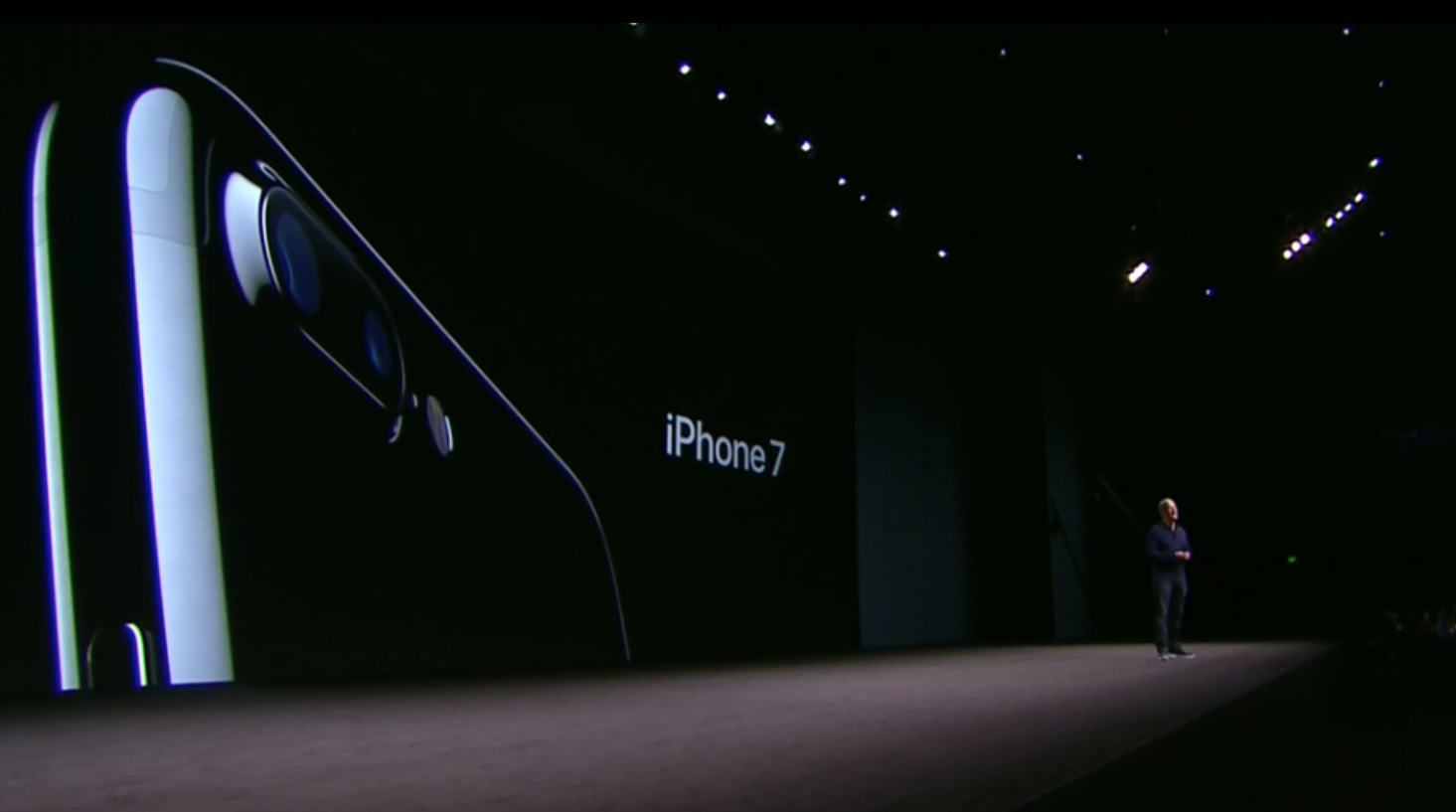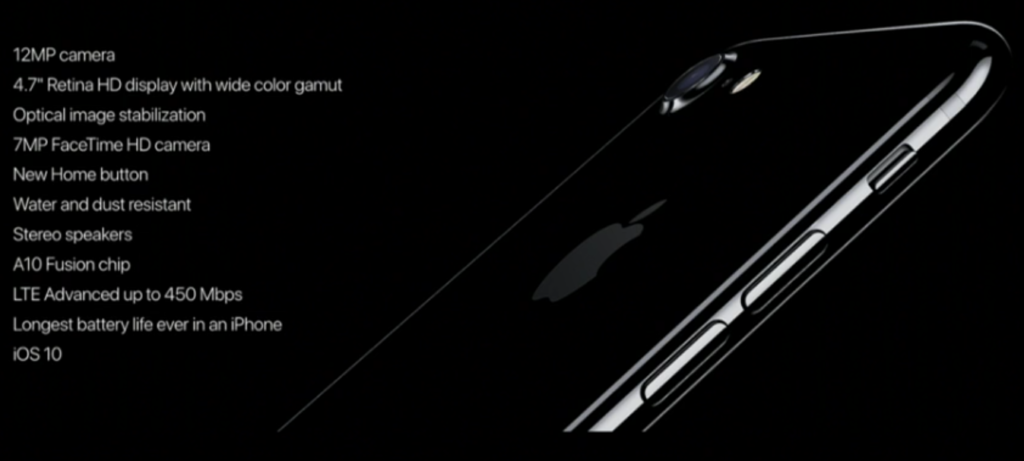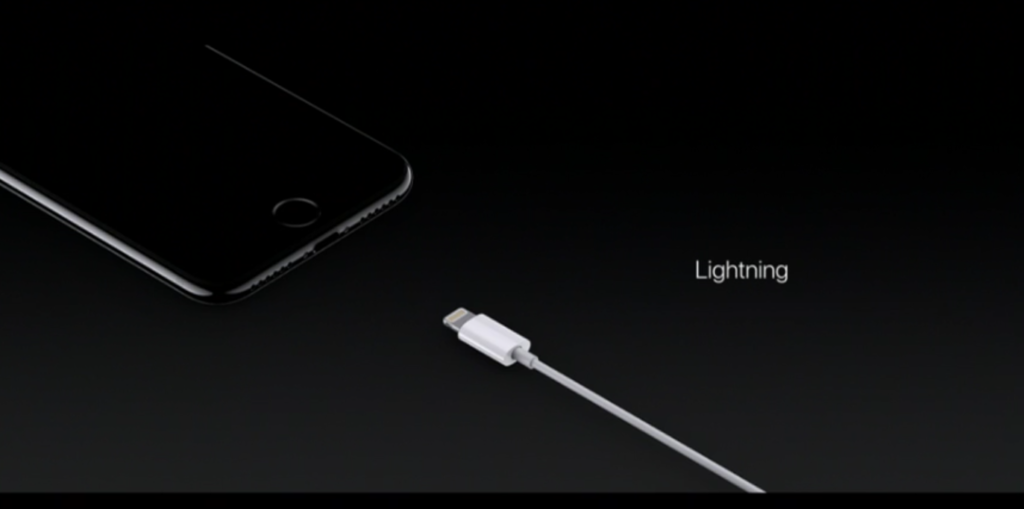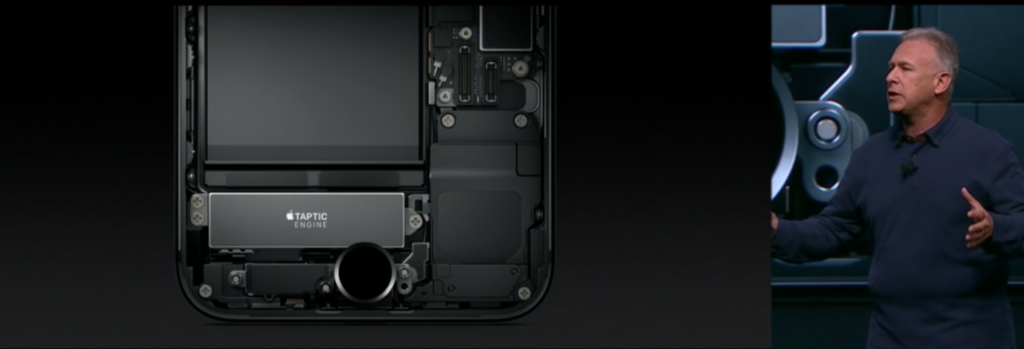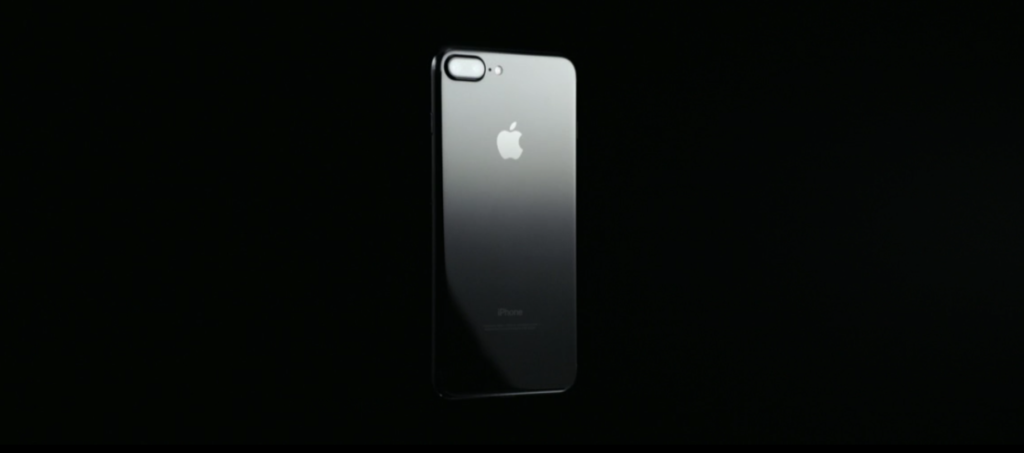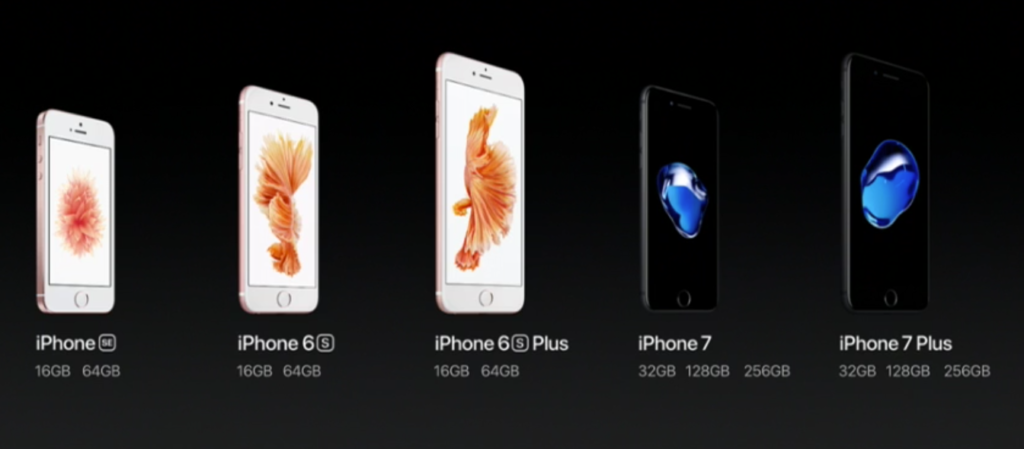Apple has unveiled its next-generation iPhone at a special announcement event in San Francisco. Two new devices were shown off to audiences: the iPhone 7 and iPhone 7 Plus.
Following a number of presentations, which included the Apple Watch Series 2, Apple CEO Tim Cook said, simply: “Next up, is iPhone.”
After acknowledging Apple’s recent achievement of selling over a billion iPhones, he introduced senior vice president of worldwide marketing Phil Schiller to talk about the new features, design and hardware developments.
Adjective-laden design
As predicted by numerous sources and leaks prior to the launch, the iPhone 7 retains the same screen sizes; 4.7-inch for the standard device, and 5.5-inch for the Plus model, and features virtually the same form factor as its previous two generations of iPhone.
However, the device’s antenna bands along the back have been removed, and new colors have been introduced; a new color design titled simply ‘Black’ plus a glossy black titled ‘Jet Black’. A short video with voice over from design chief Jony Ive talked of “Magnetized iron fine-polishing baths” and “high-end 3D polishings” in a very dramatic, but sublimely presented dedication to this new super-shiny iPhone.
He concludes by noting it’s the “most evolved representation of this design” – the key being a subtle acknowledgement that the form-factor hasn’t been drastically changed, but the placement of the camera built directly into the casing is still visually impressive.
The two new black styles replace space grey and join silver, gold and rose gold designs.
So long, headphone jack
It’s been on the cards for months now, and it’s now been confirmed: Apple has totally removed the standard 3.5mm headphone jack from its devices, meaning the majority of third-party headphone models are now not immediately compatible.
It’s a big change, and to cushion the blow somewhat, Apple has decided to bundle in brand new Earpods, which connect to the device via its Lightning port. Of course, the ability to charge the device and listen to music via Lightning headphones is no longer possible… here’s hoping for wireless charging in the next iteration of the iPhone.
However, Schiller notes the quality that can be achieved via Lightning as it was initially designed to be a great digital audio connector – pointedly, it provides power too, meaning high-end headphones with noise-cancelling technology won’t need to be externally powered if they’re designed for Lightning.
Schiller also made a stab at explaining Apple’s reasoning for such a drastic change. He says the reason “comes down to one word: Courage. The courage to move on and do something new.”
It was also thought before the event that the removal of the headphone jack would mean a second speaker alongside the current one. However, a second speaker slot has been added to the top of the device instead providing stereo sound for the iPhone for the first time.
Lightning Earpods will be bundled with the iPhone 7 and 7 Plus, alongside a Lightning to 3.5mm jack adaptor cable, allowing users to continuing using their regular headphones if they wish.
Waterproof & Dustproof
The next huge update is that the iPhone 7 and 7 Plus are both waterproof and dustproof. Thanks to the removal of the headphone jack, and a new rubberized seal on the SIM card port means the device can claim IP67 protection. The first number, six, means the device is entirely dustproof, while the second number deems “Protected against the effect of immersion between 15cm and 1m.”
Gimme those specs
The iPhone 7 and 7 Plus contain a brand new A10 Fusion chip which has a 64-bit four-core CPU. This contains two high performance cores which are 40% faster than last years device (and 120x faster than the original iPhone,) and two smaller, high-efficiency cores which use 1/5 the amount of power. What does that mean? According to Schiller, the efficiency chips use an Apple-designed performance controller and will handle simpler tasks like checking email to save battery life.
So, finally – do we have a battery-efficient iPhone? It depends how you look at it. Schiller would prefer us to look at it as the “longest battery life ever on an iPhone,” but in reality the iPhone 7 adds an extra two hours on average over the iPhone 6s, and the 7 Plus adds 1 hour on average over the iPhone 6s Plus.
In terms of graphics, a new GPU provides a six-core graphics chip, making it 50 percent faster than the previous model.
In terms of storage, the much maligned base model of 16GB has finally taken the hint and slouched off to be replaced by a 32GB base model. This, in turn, means the 64GB has also disappeared and the next tiers available are the 128GB and a brand new, monstrous, 256GB storage level.
The Home button goes metaphysical
Apple continues on the quest it started with the 2015 MacBook’s Force Touch trackpad and continues to replace physical parts on its products. The iPhone 7 now comes with a 3D Touch Home button, removing the physical mechanism. Even though the button is now software-based, it will still feel like a normal home button when you press it, generating haptic feedback to simulate a click.
It could also be a precursor to the removal of a visual Home button in 2017.
The new Taptic engine which provides the haptic feedback will also open its API. This means developers will be able to take advantage and create new experiences for users via the Taptic engine.
Better selfies – oh, and the main camera’s better, too
This is another big one. The camera on both devices receives a mighty upgrade thanks to a completely redesigned approach. Firstly, the camera flash has four LEDs instead of two which emits twice as much light. It also has a flicker sensor feature which reads the flicker from artificial lighting and compensates producing a better image.
Also, optimal image stabilization, previously only available on Plus models comes to the standard model for first time. There’s also a larger 1.8 aperture lense, and a high-speed sensor – meaning the 12 megapixel camera is 60% faster, and 30% more energy efficient.
Schiller notes that it performs over 100 billion performances in 25 milliseconds: “this truly is a supercomputer for photos.”
Live Photos also receive video image stabilization, and provides the opportunity to edit them after they’ve been captures.
The front-facing FaceTime HD camera also jumps from 5mp to 7mp, while wide color and auto image stablization are also present in this camera.
But, significantly, the iPhone 7 Plus takes this further. A second 12mp camera has been added providing a dual camera system. One camera is the same on the standard model, but the second provides a Telephoto lens, meaning real, hardware zoom.
Schiller demonstrated the system, and the feature is built into the Camera app – a button just above the shutter says 1x when at regular zoom, but tapping on this will increase it to 2x without losing any quality. From there you can go to 10x zoom, but this will be based on software and lose quality. However, it’s claimed to be four times better before that previous software zoom.
A bright future
Surprisingly, the screen itself has been boosted. The retina display is now 25% brighter, has a wide color gamut, and color management.
Ian Spalter, head of design at popular social photo-sharing app Instagram revealed the app would be updated, redesigning all of its color filters to take advantage of the wide color gamut. It will also tap into the Live Photos API and instantly turn them into ‘Boomerangs’ – Instagram’s video looping effect.
When can I get it?
The iPhone 7 and 7 Plus will ship on September 16, while pre-orders will be taking from just a week before on September 9.
The iPhone 7 will be priced at $649 (32GB model), $749 (128GB), and $849 (256GB)
The iPhone 7 Plus will be priced at $769 (32GB), $869 (128GB) and $969 (256GB).
Furthermore, the iPhone upgrade program, which allows users to replace their iPhones every year, which currently starts at $32 per month will expand to both the UK and China.
It will be available at launch in the following countries: Australia, Austria, Belgium, Canada, China, Denmark, Finland, France, Germany, Hong Kong, Ireland, Italy, Japan, Luxembourg, Mexico, Netherlands, New Zealand, Norway, Portugal, Puerto Rico, Singapore, Spain, Sweden, Switzerland, Taiwan, UAE, United Kingdom and United States.
Read more stories from Apple’s recent live event
